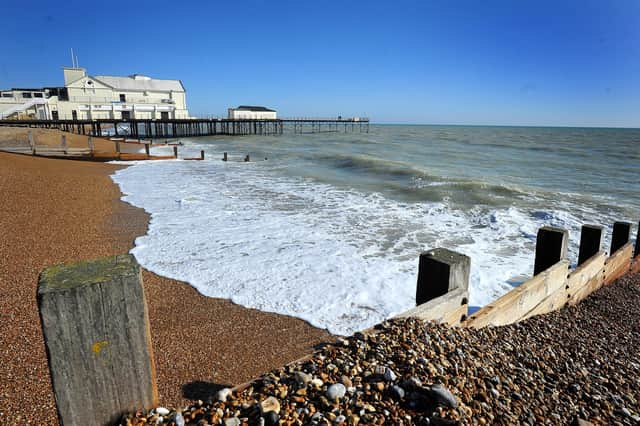More storm releases across Bognor beaches


More storm releases were authorised at locations in Pagham, Aldwick and Bognor Regis east this week, with additional releases taking place in Littlehampton.
The news comes after residents expressed concerns about what appeared to be raw sewage washing up on Bognor beaches following a number of similar releases in late July.
Advertisement
Hide AdAdvertisement
Hide AdAt the beginning of that month, Southern Water was fined £90 million for deliberately pouring sewage into the north Kent and Hampshire coasts.
A spokesperson for Southern Water said the latest releases have been authorised following inclement weather along the coast.
“There was some very heavy rain (on Tuesday) that went down along the whole coast and the way the sewage and drainage system has been designed, going back 100 years, surface water drains were often combined with the sewer system,” they said.
“That means, when it rains, instead of just getting waste water, which we can treat, we get huge quantities of rain.”
Advertisement
Hide AdAdvertisement
Hide AdIn those circumstances, he said, the rain water fills storm tanks at treatment centres and, if the rain continues, the contents are screened and released several miles out to sea.
“That is done for one reason,” the spokesperson continued, “to protect our customers’ homes, schools and businesses from flooding.”
Storm releases are not the water company’s ideal solution but, the spokesperson said, separating the drainage and the sewage system would be a lengthy, complex and multi-million pound procedure along the coast.
Instead, they urged individuals and businesses to take responsibility for their waste, making storm releases less necessary.
For the spokesperson, the ‘real solution’ is environmental.
Advertisement
Hide AdAdvertisement
Hide Ad“It’s finding the places where water falls naturally and planting it to do so and planting things that soak up lots of water,” they said.
“It’s about protecting the wetland we’ve got, enhancing it, making it bigger.”